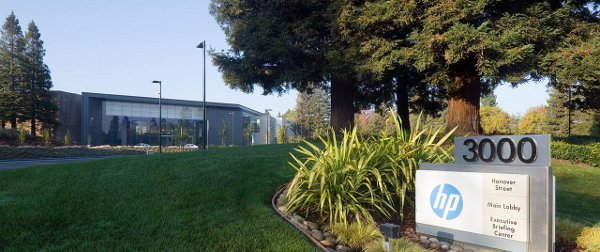
Hewlett-Packard is pushing ahead with plans to chop itself in half, grouping together its print and PC divisions under a new firm called HP Inc.
The shock announcement came yesterday as part of CEO Meg Whitman’s five-year reshaping programme to get HP back to the top of the table, and sees it make a solid division between its lucrative, yet ancient, legacy businesses and its more modern endeavours.
But what exactly does HP do? And how do those businesses fit into the new-look structure where HP is not one company, but two?
Let’s find out…
Hewlett-Packard Enterprise
This is the company that will comprise all of HP’s modern technology efforts, and it will be headed up by Meg Whitman as CEO.
HP predicts this firm will have a yearly revenue of $58.4bn and a profit of $6bn, based on revenues and earnings from 2013 and 2014.
So, what will it consist of?
Servers
HP has just released Generation 9 of its ProLiant server technology, and hopes to take advantage of the expiration of Windows Server 2003 in 2015 as users seek to migrate to servers capable of running newer operating systems.
Server shipments grew 1.3% year-on-year in the second quarter of 2014, according to Gartner, and HP dominates the market with $3.2bn in revenue.
Storage
HP’s storage offerings feed right into its server portfolio, with every Gen9 server comes with 1TB of free VSA storage. Optimised for VMware’s vSphere and Microsoft’s Hyper-V hypervisors, StoreVirtual VSA (virtual storage arrays) allow customers to create and manage virtual storage arrays within their application server while also scaling with your storage requirements.
Networking
HP has solutions across the networking spectrum, covering everything from your data centre to wireless LAN to software-defined networking (SDN).
The company claims 58% of all companies run HP networking tools, including 80% of all electric utility companies and 89% of car manufacturers.
New products include its R100 Wireless VPN Router, an all-in-one router that HP says delivers quick Internet access and both wired and wireless connectivity for offices and remote workers.
It also has a distributed cloud networking service, enabling service providers to take advantage of SDN and network virtualisation to build multi-cloud environments.
Cloud
Helion is HP’s big cloud offering. It runs the gamut of cloud computing, covering public, private and hybrid options.
However, HP’s cloud strategy has recently appeared fuzzy. It is a member of OpenStack, the open source cloud collective for companies to produce APIs for developers who do not want to get stuck in the walled-garden of Amazon Web Services.
HP then went and hedged its bets by buying Eucalyptus, a startup producing software that helps companies build private and hybrid clouds compatible with AWS.
Converged systems
Converged systems is HP’s big competitor to the likes of Oracle Engineered Systems: tightly integrated hardware and software that combines server, storage and networking in one piece of kit.
HP hopes it provides a solution for companies moving to IT-as-a-Service models, and such systems are built to handle hefty workloads while reducing costs as companies try to take advantage of data-heavy trends like cloud, mobility and, of course, big data.
HP Inc
Comprising printers and PCs, HP Inc basically looks after HP’s lucrative but shrinking legacy IT market.
The soon to be created company is expected to drag in revenues of $57.2bn based on 2013 and 2014 revenues, with an operating profit of $5.4bn.
PCs
While Enterprise is all about the future of technology, HP Inc has its head firmly stuck in the sand when it comes to computing, and will continue to flog desktops to anyone who’ll take them.
Despite this, the PC market is firmly in decline, with global shipments dropping by 2.9% to 32.5 million in the second quarter of the year, according to IDC.
Still, it’s an attractive cashcow for HP- but one that its Enterprise arm will presumably not be able to use to fund any R&D.
Printers
Ditto on printers. HP covers everything from home to work to industrial printers and scanners, but with the rise of cloud there’s less and less interest in this market.
Quocirca analyst Clive Longbottom questions where the printing business will fit in overall in HP’s new strategy.
Citing points made by his colleague Louella Fernandes, he says: "All the multi-function printers and high end stuff (which includes plotters) may have to stay in Enterprise while the inkjets and low end LaserJets could all be that goes over to [Inc].
"If this was the case, there would be less problems with providing managed print services (MPS) skills from the main Enterprise services team – but there could be problems in the cost of parts going up for the two HPs as the technology gets split across two companies (so negating any benefits of economy of scale)."
But hang on… HP also announced its intentions to explore 3D printing in its announcement yesterday. Despite being a ten-year-old technology, it’s only recently taking off thanks to recent advances making it cheap enough for consumers to buy. This could be a good business for HP to get into.
As Longbottom says: "It would be good to see a proper range of 3D printers from a company which has a good brand and a solid reputation out there."






